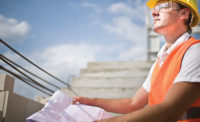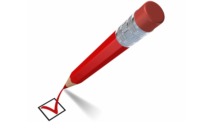Sun safety tips for outdoor workers

Up to 90% of all skin cancers are caused by either prolonged or intense exposure to the sun. Outdoor workers naturally spend more time exposed to UV radiation and are at greater risk of sun damage and the subsequent development of skin cancers. Sun safety is often neglected in the workplace as a serious health and safety issue, so outdoor workers should be extra careful in ensuring they protect themselves.
Sun protective clothing
- Clothing can be one of the most effective barriers between our skin and the sun
- Clothing should cover as much skin as possible:
- Always keep shoulders covered that can easily burn
- A closer weave will provide more protection
- A high UPF rated fabric provides best protection
Apply SPF 30+ sunscreen:
- Always use a sunscreen with a Sun Protection Factor (SPF) 30 or above, preferably water resistant
- Make sure it's broad spectrum and carries a UVA symbol (if it has a star rating, a minimum 4 star)
- Take to work and store in an accessible, cool place and remember to check the expiry date
- Apply a generous amount to clean, dry, exposed skin
- Apply 20 minutes before going outdoors and preferably once again when outdoors
- Regardless of the instructions, all sunscreens should be reapplied at least every 2 hours and more if perspiring heavily / towelling
- Remember to protect your lips with an SPF 30+ lip balm
Wear a sun hat
- Always wear a hat with a wide brim that shades the face, neck and ears
- A close weave or UPF rated fabric will provide better protection
- Legionnaire (with a flap that covers the neck and joins the front peak) or bucket style hats (with minimum 7.5cm brim) are the most effective. Hard hats can be fitted with a sun peak and flap if required.
Slide on quality sunglasses. Ensure they are close fitting and wrap around to stop solar UVR entering the sides and top. Remember price and darkness of the lens do not reflect the quality of protection
- Solar UV radiation can be damaging to the eyes. It is important to wear quality sunglasses
- Overall protection depends on the quality of the lens and the overall design
Shade from the sun whenever possible
- Shade can provide a good barrier between our skin and the sun
- Seek shade whenever possible, particularly at the hottest times of the day between 11 am and 3 pm when UV penetration is strongest and at break times
- Outside jobs can sometimes be done inside or moved to a shady location.
- A temporary shelter can be erected or trees and buildings used for protection.
- Try to reorganize the job so tasks requiring outdoor work get done in the morning before 11 am and after 3 pm, to avoid the hours of greatest sun intensity.
- Never rely on shade alone, always combine with personal protection measures
Ultraviolet radiation from the sun bounces off water, sand, concrete, light-colored surfaces and snow and can considerably increase the strength of the sun's damaging rays. People who work near these areas will need to take extra care.
Some outdoor workers are also exposed to substances that increase the harmful effects of ultraviolet radiation. These include industrial chemicals such as asphalt and diphenyls, and some medications. People who work near or with these substances need to take extra care. A water-resistant sunscreen can help give protection when there is likely to be skin contact with these substances.
Is your workplace sun safe?
In more than 80% of cases, skin cancer is caused by over exposure to UV – and it is highly preventable. Education on the prevention and early detection of the disease is paramount and needs to be on everyone's agenda.
Looking for a reprint of this article?
From high-res PDFs to custom plaques, order your copy today!






